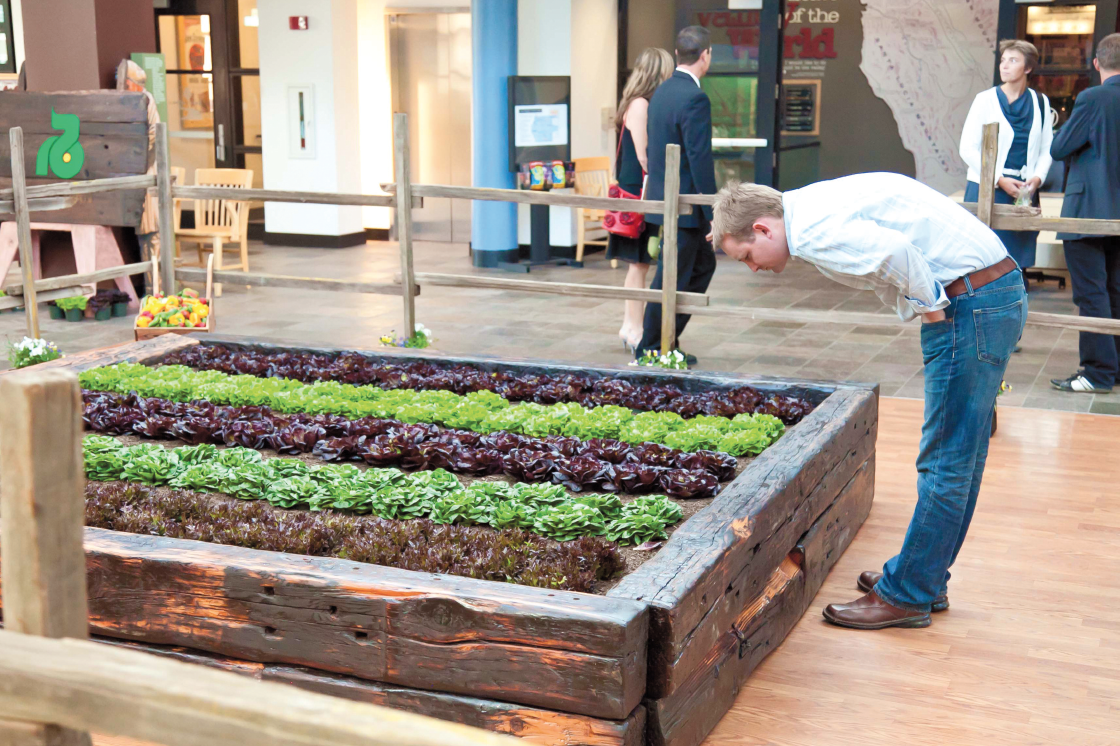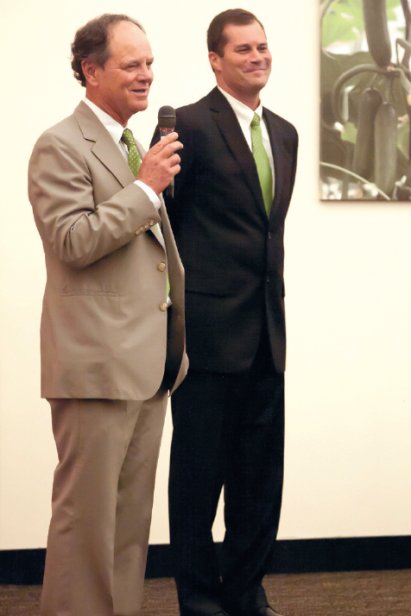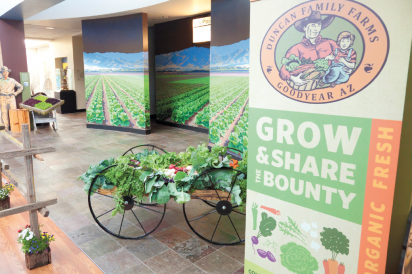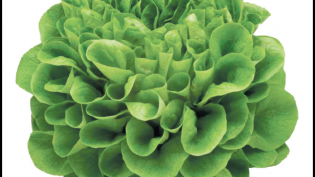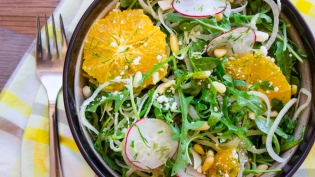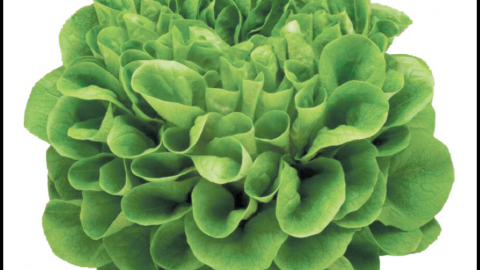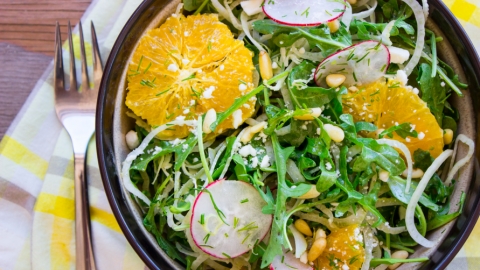Lettuce Innovation and the Art of Popularizing Salads
Lettuce has come a long way since its purported introduction to the New World, when Christopher Columbus is said to have brought it along on his storied voyages. Although Americans began growing lettuce in the Colonial era, the plant's popularity picked up in the 20th century when the western United States began growing it on an industrial level. From Columbus' time to today, lettuce has become our country's top crop in terms of production value.
Arizona and California lead the country in lettuce production, according to the Agricultural Marketing Research Center. It is fitting, then, that these two states would be the hotbed for an altogether new breed of lettuce that is making its way onto foodie tabletops and grocery store produce shelves.
Called Salanova, this flavorful new lettuce was the brainchild of Rijk Zwaan, a global seed company headquartered in the Netherlands. The West Valley's own Duncan Family Farms (DFF) has been trialing Salanova for Rijk Zwaan and will begin selling it commercially in January 2013.
Around 2,000 of the farm's 2,500 acres are used to grow organic baby lettuces and greens, most of which is destined for the bagged salad industry. Patty Emmert, the farm's specialty crops manager, says the family-run farm in Goodyear was drawn to Salanova by the exciting prospect of growing something entirely new.
"It was a new breed of lettuce," Emmert says matter-of-factly. "Arnott [Duncan] is always looking ahead and wanting to try new things. It was the opportunity to do that."
The Story of Salanova
Rijk Zwaan plant breeders Marco Moor and Egbert Smits got the idea for Salanova from (where else?) nature: They noticed a lettuce with multiple leaves growing in a field and set off cultivating what would eventually be named Salanova.
At a recent joint Rijk Zwaan–DFF event in Salinas, California, Moor joked that he has two children with his wife and "another child named Salanova." Indeed, the Dutch plant breeder committed 10 years to developing the lettuce, honing its properties to achieve the desired qualities that now define it. For example, a head of Salanova lettuce has up to 200 leaves while a normal head of lettuce is comprised of 40 to 50 leaves. To arrive at that desired effect (a high quantity of bite-size leaves), Moor deadpanned that his job involved "counting a lot of leaves."
Eight years ago, after a decade of development, Rijk Zwaan released the lettuce to growers for trialing. It was released for commercial use in 2005, but the bagged salad company Fresh Express had an exclusive on growing it in the United States until almost two years ago. Now, Rijk Zwaan has five contract Salanova partners, including Phoenix-based Bella Fresh, who have partnered with an increasing number of growers, including Duncan Family Farms, which will grow it organically for commercial use beginning in January.
"Salanova is the Rijk Zwaan dream, and mine as well," Moor told attendees at the September event in California. "My dream is that Salanova can be grown everywhere, worldwide, year round – and I think it can come true."
Debuting a brand new type of lettuce was also a dream come true for Karen Marie Feliz, Rijk Zwaan's lettuce crop account manager. She says it's not often that a new vegetable enters the market, and that she can't recall the last time a new lettuce came around.
"People like me – a field person – wait their entire life to have this kind of opportunity," says Feliz, who oversees the Salanova project for the United States. "Most people go their entire career without the chance. The fact that I get to introduce a brand new lettuce to the United States, that's a privilege [and] a blessing."
Innovation has been at the core of Rijk Zwaan's mission throughout its more than 80 years in business. The company's inventive knack for produce progress has led it to become one of the 10 largest globally operating vegetable breeding companies in the world (while remaining an independent family-owned business, to boot).
When it comes to genetic engineering, they do things the old-fashioned way: without it. But the results – arrived at by meticulous multi-year breeding experiments – are still cutting edge.
"Solutions are what drive us," says Feliz. "[We ask] what problem is out in the industry, and that's what we breed for."
Salanova is Rijk Zwaan's answer to what they believe is an underwhelming bagged salad market.
"[Spring mix] is grown as a tender leaf and there are shelf life problems because it is literally a baby," explains Feliz. "It hasn't had a chance to mature. The thought process behind Salanova was a mature head for better shelf life with small leaves."
Mature leaves, adds Feliz, have developed a full flavor profile, and therefore also taste better. Both types of Salanova – Incised and Multileaf – are squat, fully matured heads of bright, small leaves that fall away with a single cut around the bottom stem. Feliz calls the reaction to Salanova "amazing."
As a consumer of the lettuce, DFF's Emmert says she can attest that Salanova has "got the look, the taste and the texture."
Eat Your Greens
In July 2011, The Wall Street Journal reported that the average American ate a salad only 36 times a year – 20% less often than in 1985.
Rijk Zwaan, however, has seen steady increases in lettuce seed sales over the last seven years, according to Feliz with seeds in more than 100 countries.
Both Rijk Zwaan and DFF have embarked on educational campaigns to popularize salads and raise awareness about the health benefits associated with consuming them. The former has a worldwide effort called Love My Salad (lovemysalad.com) – a "salad social network" that allows users to share recipes, learn about growers, peruse the "Salapedia" and more. DFF's program, Salad-A-Day, is a CSA-style offering that delivers boxes of fresh, seasonal salad makings to subscribers at their workplaces or local pickup locations (duncanfamilyfarmslocal.com).
Lettuce alone doth not a salad make, and both entities are intent on also promoting specialty vegetables that make for interesting, healthy salad ingredients.
"We were trying to show Rijk Zwaan as a specialty veg company and that's why we partnered with Duncan [for the dinner in Salinas]," says Feliz. "They grow a lot of our weird stuff," she adds with a laugh. By "weird," she means vegetables other than the standard broccoli, cauliflower and carrots, such as one of her favorites – kohlrabi. The trouble with growing these nutritious, tasty veggies is that not everyone knows of them or how to prepare them. "If you don't know what kohlrabi is, you're not going to stop and eat it if you don't know how to cook it," she says.
To make these vegetables more accessible, both salad campaigns emphasize the inclusion of easy and tasty recipes. Emmert knows the Salad-A-Day program is having an impact because of the overwhelmingly positive survey responses the farm receives.
"We ask about the recipes and about the level of difficulty with the recipes," she says, "[and we ask if ] they find that by participating in the CSA they have been introduced to new vegetables, [and] if it made them more willing to try it. Without fail, it's a resounding yes. Yes, yes, yes. We've had people say things like 'I never thought I liked beets and now I love beets.'"
In addition to promoting biodiversity and increasing plant resistance to disease, Emmert says that innovations in the plant world – like the creation of Salanova – can only help improve interest in salads by "bringing taste components back in."
Back at the event in California, Moor stood before DFF and Rijk Zwaan representatives and donned a gypsy-like headscarf. With a shimmering glass ball in one hand and a head of his prize lettuce in the other, he said, "What is the similarity between a crystal ball and Salanova? With both you have the future in your hands."
Both Rijk Zwaan and DFF have embarked on educational campaigns to popularize salads and raise awareness about the health benefits associated with consuming them. The former has a worldwide effort called Love My Salad (lovemysalad.com) – a "salad social network" that allows users to share recipes, learn about growers, peruse the "Salapedia" and more. DFF's program, Salad-A-Day, is a CSA-style offering that delivers boxes of fresh, seasonal salad makings to subscribers at their workplaces or local pickup locations (duncanfamilyfarmslocal.com).
Lettuce alone doth not a salad make, and both entities are intent on also promoting specialty vegetables that make for interesting, healthy salad ingredients.
"We were trying to show Rijk Zwaan as a specialty veg company and that's why we partnered with Duncan [for the dinner in Salinas]," says Feliz. "They grow a lot of our weird stuff," she adds with a laugh. By "weird," she means vegetables other than the standard broccoli, cauliflower and carrots, such as one of her favorites – kohlrabi. The trouble with growing these nutritious, tasty veggies is that not everyone knows of them or how to prepare them. "If you don't know what kohlrabi is, you're not going to stop and eat it if you don't know how to cook it," she says.
To make these vegetables more accessible, both salad campaigns emphasize the inclusion of easy and tasty recipes. Emmert knows the Salad-A-Day program is having an impact because of the overwhelmingly positive survey responses the farm receives.
"We ask about the recipes and about the level of difficulty with the recipes," she says, "[and we ask if ] they find that by participating in the CSA they have been introduced to new vegetables, [and] if it made them more willing to try it. Without fail, it's a resounding yes. Yes, yes, yes. We've had people say things like 'I never thought I liked beets and now I love beets.'"
In addition to promoting biodiversity and increasing plant resistance to disease, Emmert says that innovations in the plant world – like the creation of Salanova – can only help improve interest in salads by "bringing taste components back in."
Back at the event in California, Moor stood before DFF and Rijk Zwaan representatives and donned a gypsy-like headscarf. With a shimmering glass ball in one hand and a head of his prize lettuce in the other, he said, "What is the similarity between a crystal ball and Salanova? With both you have the future in your hands."


